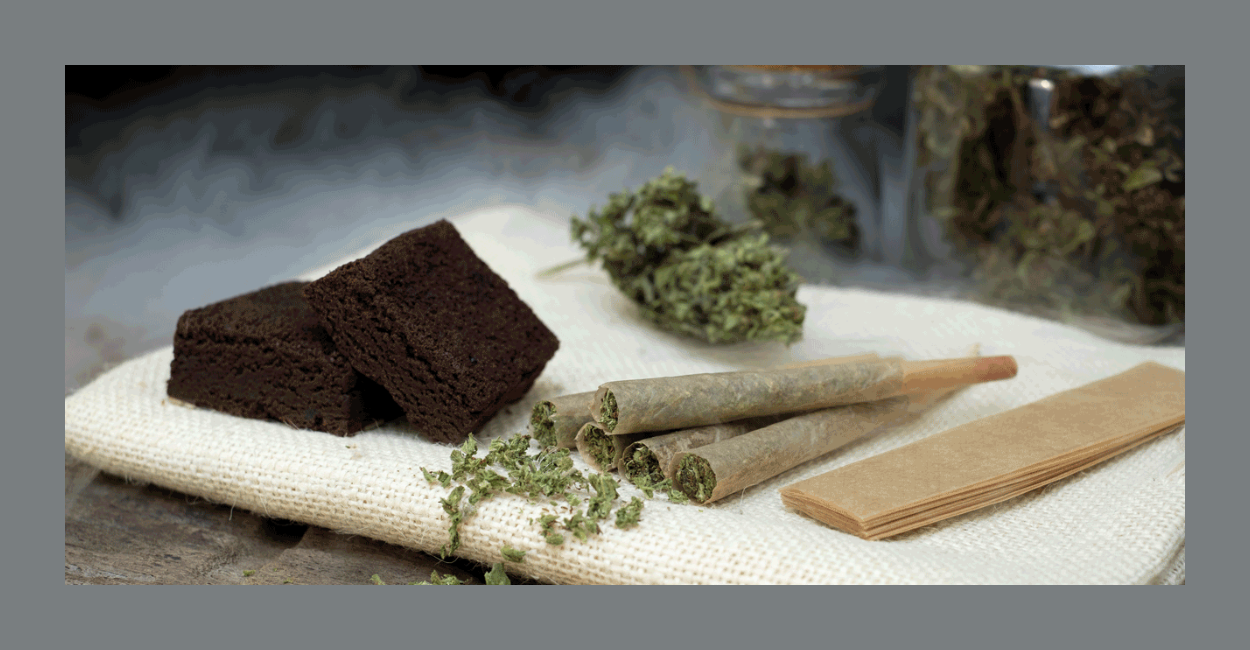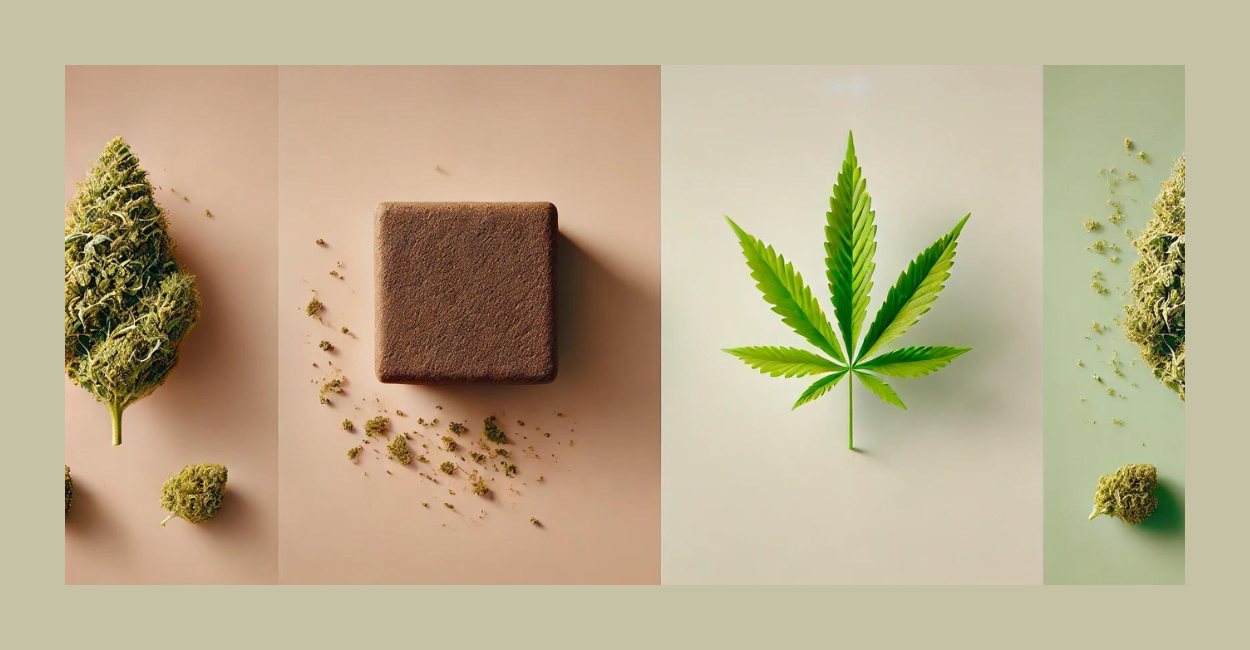Reading time: 6-7 minutes
Introduction
In the world of cannabis cultivation, understanding the differences between various products is essential for both newcomers and experienced enthusiasts. Hashish (known as hash) and marijuana (often referred to as weed) are two popular forms of cannabis, each with unique properties, effects, and consumption methods. This comprehensive guide highlights the main differences between hash and weed and covers their origins, production processes, chemical compositions, effects, and applications. By the end of this article, you will have a clearer understanding of these two cannabis products and be better equipped to make informed decisions.
Definitions and Origins: The Difference Between Hash and Weed

What is Hash?
Hashish, or hash, is a concentrated form of cannabis made by collecting and pressing the resin glands (trichomes) of the cannabis plant. These trichomes contain high concentrations of cannabinoids, particularly THC (Tetrahydrocannabinol), the compound responsible for the psychoactive effects of cannabis. Hash has been used for centuries, with historical records indicating its use in ancient Persia, India, and North Africa. Traditionally, hash is made by hand-rubbing the cannabis flowers or by sieving and pressing the trichomes into a solid block.
What is Weed?
Weed, also known as marijuana or grass, refers to the dried flowers and leaves of the cannabis plant. It is the most commonly used form of cannabis and is typically consumed by smoking, vaporizing, or eating. Marijuana has a rich history, with evidence of its use dating back thousands of years in various cultures worldwide, including ancient China, Egypt, and the Middle East. The cultivation methods for marijuana have evolved significantly over time, leading to the development of numerous strains with different THC and CBD concentrations.
Related Posts
- The Art of Joint Rolling
- Brownies: Brownie-Hash
- Cannabis plants for hash production
- When Do Hashish Cookies Take Effect
- Cannabinoids, Terpenes, and Flavonoids
- The Effects of Hashish Consumption
- The History of Medical Cannabis
- Spliffs, Joints and Blunts: A Fun Comparison
- Tobacco Substitutes for Joints: Alternatives
Chemical Composition

Active Compounds in Hash
Hashish contains a high concentration of cannabinoids, primarily THC, which can range from 20% to 60% depending on the quality and production method. It also contains CBD, though in lower concentrations compared to THC. The production process of hash involves collecting the resin glands, which are rich in these compounds, resulting in a potent product with concentrated effects.
Active Compounds in Weed
Marijuana contains a mix of cannabinoids, with THC and CBD being the most prominent. The THC content in marijuana typically ranges from 10% to 30%, although some high-potency strains can exceed these levels. CBD concentrations vary widely among different strains, and many modern cultivars are specifically bred to increase either THC or CBD content. The presence of other cannabinoids, such as CBN (cannabinol) and CBG (cannabigerol), also contributes to the overall effects of marijuana.
Effects and Experiences

Psychoactive Effects of Hash
Due to its high THC content, hashish produces strong psychoactive effects, including euphoria, heightened sensory perception, and a sense of relaxation. The potency of hash means that users often experience more intense effects than with marijuana. Depending on the strain and production method, hash can also offer therapeutic benefits, such as pain relief, reduced inflammation, and anxiety reduction.
Psychoactive Effects of Weed
The effects of marijuana vary widely depending on the strain and cannabinoid profile. High-THC strains tend to produce euphoric, uplifting effects, while high-CBD strains are known for their calming and therapeutic properties without the intense psychoactive high. Common effects of marijuana include mood elevation, increased creativity, and relaxation. Users may also experience dry mouth, red eyes, and increased appetite, known as "the munchies."
Application and Consumption

Using Hash
Hashish can be consumed in various ways, including smoking, vaporizing, and eating. When smoking, hash can be added to tobacco or marijuana in a joint or pipe. Vaporizing hash involves heating the product to a temperature that releases the cannabinoids without combustion, providing a smoother and potentially healthier alternative to smoking. Edible products made from hash are also popular, offering long-lasting and potent effects.
Using Weed
Marijuana is most commonly smoked in joints, blunts, pipes, or bongs. Vaporizing is another popular method, offering a cleaner and more controlled experience. Edible products, such as brownies, gummies, and beverages, provide a discreet and convenient way to consume marijuana, although the onset of effects is delayed compared to smoking or vaporizing. Topical products, tinctures, and oils offer alternative methods for those seeking the therapeutic benefits of marijuana without the psychoactive effects.
Safety and Legal Considerations
When consuming any form of cannabis, it is important to be aware of the legal status in your region and the potential risks and side effects. Start with a low dose, especially if you are new to cannabis or trying a new product, to assess your tolerance and avoid unwanted effects. Be aware of potential interactions with other medications and consult a healthcare professional if you have any concerns.
Understanding the differences between hash and weed is crucial for cannabis enthusiasts exploring the diverse world of cannabis products. While both hash and weed come from the same plant, their distinct production methods, chemical compositions, effects, and consumption methods offer unique experiences. Whether you prefer the intense potency of hash or the versatile options of marijuana, being informed about these products will enhance your cannabis experience. Enjoy responsibly and always prioritize your safety and well-being.
Disclaimer
This website's content is for informational use only and should not be considered medical or legal advice. Always consult a healthcare professional for health-related issues. Be aware of local regulations regarding cannabis cultivation. We are not liable for any actions taken based on this information.

